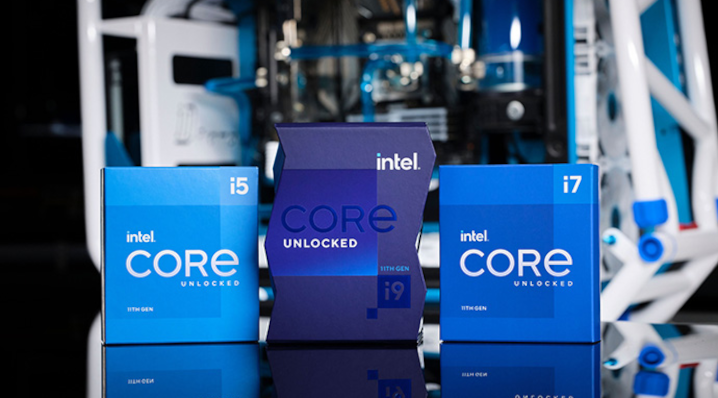 INFRA
INFRA
 INFRA
INFRA
 INFRA
INFRA
Intel Corp. today refreshed its desktop processor portfolio with the introduction of the Rocket Lake-S central processing unit series, which uses a new core architecture dubbed Cypress Cove to provide maximum clock frequencies of up to 5.3 gigahertz.
Cypress Cove is a mix of current- and previous-generation chip technologies. It’s based on the Sunny Cove core design powering some of Intel’s 10-nanometer laptop CPUs, but it’s fabricated using a previous-generation 14-nanometer manufacturing process. For rendering tasks, the Rocket Lake-S series uses Xe integrated graphics circuits, which have similarly been brought over from the 10-nanometer section of Intel’s CPU portfolio.
Intel says that the Rocket Lake-S’s new architecture will provide an up to 19% increase in instructions per cycle. As a result, the company promises, the CPU series can in some cases run popular desktop applications faster than comparable Advanced Micro Devices Inc. silicon.
Intel compared the most powerful CPU in the Rocket Lake-S lineup with a Ryzen 9 5900X to test its speed. The company says that the CPU it tested, known as the Core i9-11900K, outperformed AMD’s processor by 8% when running Microsoft Corp.’s Office applications. It achieved faster speeds in a number of popular creative applications as well and completed the industry-standard MLPerf machine learning performance test 38% faster.
The Core i9-11900K has eight cores that run at a base clock frequency of 3.5GHz. They can achieve top speeds of 5.3GHz for short amounts of time when performing demanding computations by using Intel’s Thermal Velocity Boost technology. The technology, currently in its third generation, allows CPUs to exceed their base frequency when they can do so without going above the maximum acceptable operating temperature.
A second speed optimization feature shipping with the Rocket Lake-S series is called DL Boost. The technology reduces the amount of processor instructions required for machine learning calculations by two-thirds in some cases, which lowers computing requirements. The result is a speedup for the growing number of consumer applications that use AI under the hood.
For users looking to further increase their desktops’ performance, Rocket Lake-S processor provides the option to speed up the clock frequency of a computer’s memory chips temporarily. The feature is made possible by an integrated memory controller built into the CPU series. Increasing the clock frequency allows more bits to move in and out of memory, which can provide a speed boost for applications that manipulate a lot of data.
Support our mission to keep content open and free by engaging with theCUBE community. Join theCUBE’s Alumni Trust Network, where technology leaders connect, share intelligence and create opportunities.
Founded by tech visionaries John Furrier and Dave Vellante, SiliconANGLE Media has built a dynamic ecosystem of industry-leading digital media brands that reach 15+ million elite tech professionals. Our new proprietary theCUBE AI Video Cloud is breaking ground in audience interaction, leveraging theCUBEai.com neural network to help technology companies make data-driven decisions and stay at the forefront of industry conversations.